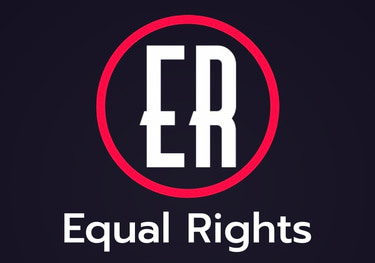Stories of Change:
How Grassroots Movements Have Made a Difference in Human Rights
Kylo B
6/23/2024
Stories of Change: How Grassroots Movements Have Made a Difference in Human Rights
Grassroots movements have a profound impact on the promotion and protection of human rights worldwide. These movements, often initiated and driven by local communities, have led to significant social, political, and legal changes.
This article highlights several inspiring success stories of grassroots movements that have improved human rights, showcasing the power of collective action and local advocacy.
1. The Civil Rights Movement in the United States
Era: 1950s-1960s
Key Figures: Martin Luther King Jr., Rosa Parks, Malcolm X
Overview: The Civil Rights Movement sought to end racial segregation and discrimination against African Americans, securing equal rights under the law. It utilized nonviolent protest and civil disobedience to challenge systemic racism and injustice.
Successes:
The Civil Rights Act of 1964: This landmark legislation outlawed discrimination based on race, color, religion, sex, or national origin.
The Voting Rights Act of 1965: This act eliminated various barriers to voting for African Americans, leading to a significant increase in voter registration and participation.
Desegregation of Schools: The movement led to the desegregation of public schools, ensuring equal educational opportunities for all children.
2. The Anti-Apartheid Movement in South Africa
Era: 1950s-1990s
Key Figures: Nelson Mandela, Desmond Tutu, Steve Biko
Overview: The Anti-Apartheid Movement fought against the system of apartheid, a regime of institutionalized racial segregation and discrimination in South Africa.
Successes:
End of Apartheid: The movement's persistent efforts, combined with international pressure, led to the dismantling of apartheid laws and policies.
First Democratic Elections: In 1994, South Africa held its first democratic elections, resulting in Nelson Mandela becoming the country's first Black president.
Truth and Reconciliation Commission: Established to address past human rights abuses and promote national healing and reconciliation.
3. The Women’s Suffrage Movement
Era: Late 19th to early 20th century
Key Figures: Susan B. Anthony, Elizabeth Cady Stanton, Emmeline Pankhurst
Overview: The Women’s Suffrage Movement aimed to secure the right to vote for women, challenging gender discrimination and advocating for equal political participation.
Successes:
19th Amendment in the United States: Ratified in 1920, this amendment granted American women the right to vote.
Widespread Suffrage Achievements: Similar movements around the world led to women gaining the right to vote in many countries, including the UK (1918 for women over 30, 1928 for all women), New Zealand (1893), and Australia (1902).
4. The LGBTQ+ Rights Movement
Era: 1960s-present
Key Figures: Harvey Milk, Marsha P. Johnson, Sylvia Rivera
Overview: The LGBTQ+ Rights Movement advocates for the rights and acceptance of lesbian, gay, bisexual, transgender, and queer individuals, challenging discrimination and advocating for equal treatment.
Successes:
Legalization of Same-Sex Marriage: Many countries, including the United States (2015), have legalized same-sex marriage, recognizing the rights of LGBTQ+ individuals to marry.
Anti-Discrimination Laws: Various jurisdictions have enacted laws prohibiting discrimination based on sexual orientation and gender identity.
Increased Visibility and Acceptance: The movement has significantly increased the visibility and social acceptance of LGBTQ+ individuals, fostering a more inclusive society.
5. The Environmental Justice Movement
Era: 1980s-present
Key Figures: Robert Bullard, Wangari Maathai
Overview: The Environmental Justice Movement addresses the disproportionate environmental burdens faced by marginalized communities, advocating for fair treatment and meaningful involvement in environmental policies.
Successes:
Legislation and Policies: The movement has influenced the adoption of laws and policies that aim to reduce environmental inequalities, such as the Environmental Justice Act in the United States.
Global Recognition: Environmental justice has gained international recognition, with the United Nations acknowledging the need to address environmental inequalities.
Local Victories: Numerous local victories include stopping hazardous waste sites, industrial pollution, and other environmental threats in vulnerable communities.
6. The Indigenous Rights Movement
Era: 1960s-present
Key Figures: Rigoberta Menchú, Winona LaDuke
Overview: The Indigenous Rights Movement seeks to protect the rights, cultures, and lands of indigenous peoples, advocating for self-determination and recognition.
Successes:
United Nations Declaration on the Rights of Indigenous Peoples (UNDRIP): Adopted in 2007, this declaration sets out the individual and collective rights of indigenous peoples.
Land Rights and Legal Recognition: Many countries have recognized the land rights of indigenous communities and have implemented policies to protect their cultural heritage.
Cultural Revitalization: Efforts have led to the revitalization of indigenous languages, traditions, and practices, preserving cultural identity and heritage.
7. The Anti-Child Labor Movement
Era: Late 19th century-present
Key Figures: Kailash Satyarthi, Lewis Hine
Overview: The Anti-Child Labor Movement advocates for the elimination of child labor and the protection of children’s rights to education, health, and safety.
Successes:
Legislation Banning Child Labor: Many countries have enacted laws prohibiting child labor and ensuring compulsory education for children.
Global Campaigns: Initiatives like the International Labour Organization’s (ILO) conventions on child labor have set international standards for the protection of children.
Rescue and Rehabilitation: Organizations have rescued millions of children from exploitative labor conditions and provided them with education and rehabilitation.
Grassroots movements have been instrumental in driving significant human rights advancements globally. From the Civil Rights Movement in the United States to the Anti-Apartheid Movement in South Africa, these movements demonstrate the power of collective action and local advocacy in achieving social justice. By addressing issues such as racial discrimination, gender inequality, environmental injustice, and more, grassroots movements continue to shape a more equitable and just world. Their success stories serve as a testament to the enduring impact of community-driven efforts in promoting and protecting human rights.
